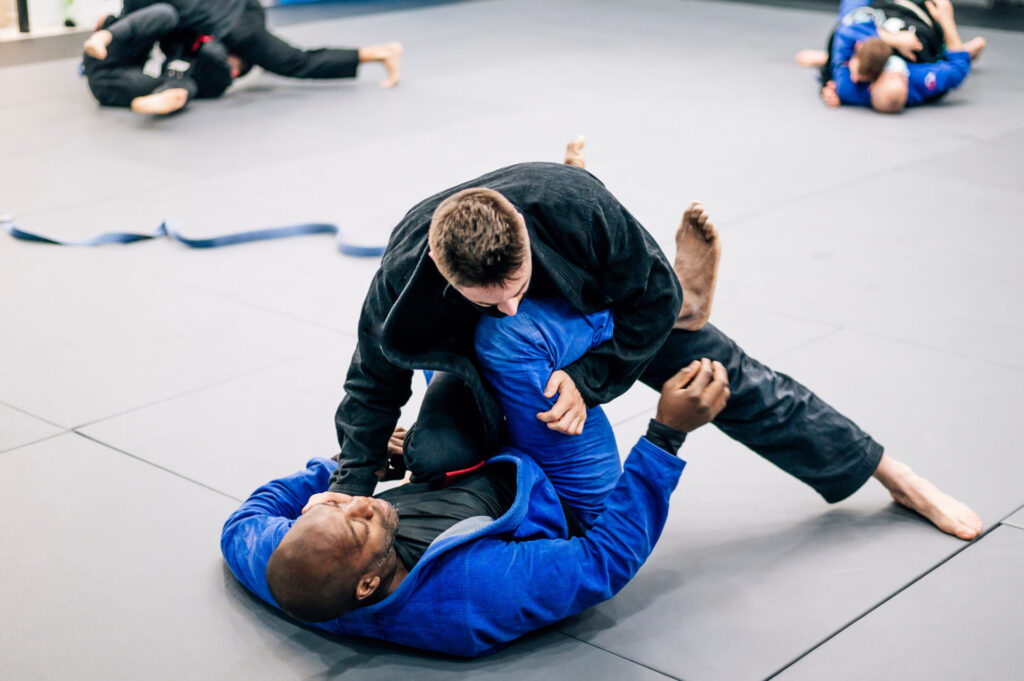
Brazilian Jiu-Jitsu (BJJ) is a martial art focusing on ground fighting and submission. It involves techniques such as joint locks and chokeholds, which can be quite intimidating to those unfamiliar with the sport. As a martial arts school specializing in Brazilian Jiu-Jitsu, we understand the concerns surrounding the safety of this martial art. In this comprehensive review, we will delve into the aspects of BJJ, addressing its safety, benefits, and the measures taken to ensure a safe training environment.
Understanding the Nature of Brazilian Jiu-Jitsu
Brazilian Jiu-Jitsu is often called the “gentle art” because it emphasizes technique and leverage over brute strength. This allows practitioners of all sizes and strengths to practice safely and effectively. The core of BJJ is to control and subdue the opponent, promoting a defensive rather than an aggressive approach.
Safety in Training: Myths vs. Reality
Myth 1: BJJ is Too Aggressive for Safe Practice
While BJJ is a combat sport, the training environment is structured and respectful. Instructors emphasize the importance of control, technique, and mutual respect among practitioners. The sparring sessions, known as ‘rolling,’ are conducted in a controlled manner where partners communicate and ensure each other’s safety.
Myth 2: Higher Risk of Injury
Like any physical activity, there is a risk of injury in BJJ. However, statistics show that BJJ’s injury rate is lower than that of other contact sports. This is largely due to the nature of the sport, which avoids striking and focuses on grappling techniques.

The Role of Instructors and Training Environment
A safe training environment is paramount in BJJ. Experienced instructors are crucial in teaching proper techniques and ensuring students are paired with appropriate partners. They also foster an environment where students feel comfortable tapping out, and stopping a technique before it leads to discomfort or injury.
Benefits of Practicing Brazilian Jiu-Jitsu
Apart from self-defense, BJJ offers numerous benefits:
- Physical Fitness: BJJ is an excellent workout that improves strength, flexibility, and cardiovascular health.
- Mental Toughness: BJJ’s strategic nature helps develop problem-solving skills and resilience.
- Community and Support: BJJ schools often foster a strong sense of community, offering support and camaraderie among practitioners.
Safety Measures and Best Practices
To ensure safety, practitioners should:
- Warm-Up Properly: Engage in thorough warm-ups to prepare the body for training.
- Communicate with Partners: Maintain open communication with your partner, especially when practicing new techniques or feeling uncomfortable.
- Tap Early and Often: Tapping out is a sign of understanding your limits, not weakness.
- Mind the Gear: Use appropriate gear, including gi, rash guards, and mouthguards, to prevent injuries.
Conclusion: Balancing the Art and Safety
Brazilian Jiu-Jitsu, when practiced under the guidance of experienced instructors and within a respectful community, offers a safe and enriching experience. It’s a martial art that teaches more than just self-defense; it’s a pathway to physical fitness, mental toughness, and a supportive community. While there are risks, as with any sport, the structured nature of BJJ training and the emphasis on technique and control significantly mitigate these risks.
As a martial arts school specializing in Brazilian Jiu-Jitsu, we are committed to providing our students a safe, welcoming, and enriching environment. We believe that with the right approach, BJJ is not just safe but also a profoundly beneficial journey for individuals of all ages and backgrounds. Contact us today at Scranton MMA to sign up for Brazilian Jiu-Jitsu classes in a safe and welcoming environment, close to Scranton, Wilkes-Barre, and Dunmore, Pennsylvania.
